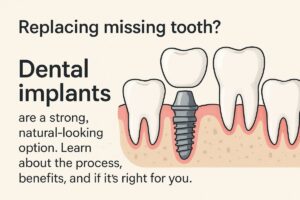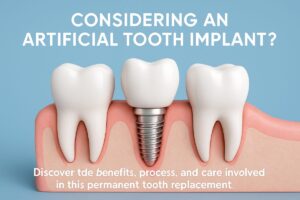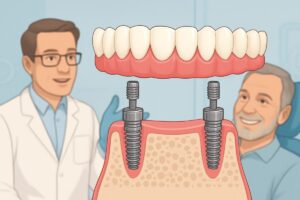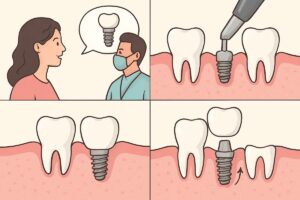Tooth loss matters. Losing one or more teeth affects how you eat, talk, and feel about your smile. This guide covers the main options missing teeth and what to expect from each choice. Read on to learn how each treatment works, what affects your decision, and how to move forward with confidence.
Why tooth loss affects more than just your smile
Tooth loss can make chewing harder, change your speech, and reduce biting strength. Over time, the jawbone where a tooth is missing can shrink. Nearby teeth may shift, creating bite problems and more wear. Beyond function, missing teeth can lower confidence and lead to social avoidance. Choosing the right replacement helps protect oral health and quality of life.
Top options missing teeth: dental implants, bridges, and dentures
Dental implants (single and multiple)
Dental implants are titanium posts placed in the jaw that hold crowns or bridges. They act like natural tooth roots, helping preserve bone and stopping nearby teeth from moving. Implants feel and function like real teeth and can last many years with good care. They work well for one missing tooth or several separate gaps.
All-on-X / full-arch implant solutions
All-on-X (All-on-4, All-on-6, etc.) uses a few implants to support a full fixed arch of teeth. This is for people missing most or all teeth who want a strong, permanent-feeling solution. Compared with traditional dentures, All-on-X offers better chewing power, less slippage, and improved bone support. It’s a major treatment but often gives the most natural function.
Fixed bridges
A fixed bridge replaces one or more missing teeth by anchoring to neighboring healthy teeth. Bridges can be quicker and less costly than implants at first. Downsides: the supporting teeth must be shaped down, and bridges don’t stop bone loss under the missing tooth. They can be a good option when adjacent teeth already need crowns.
Removable partial and full dentures
Dentures are removable plates that replace many or all teeth. They can restore appearance and basic chewing. Modern dentures fit better than older styles and may be combined with implants for added stability (implant-retained dentures). Dentures require daily cleaning and may need relines as the jaw changes.
What affects which option is right for you
Oral health & bone volume
Strong gum tissue and enough jawbone help support implants. If you have bone loss or severe gum disease, you may need treatments like bone grafting or periodontal care before getting implants. Good oral health is important for any long-term restoration.
Number and location of missing teeth
A single front tooth often calls for an implant or bridge for the best look. Multiple missing teeth in a row might be solved with an implant-supported bridge or partial denture. When the whole arch is missing, All-on-X or full dentures are typical options.
Budget, timeline, and lifestyle
Implants usually cost more up front and take several months from start to finish, but they can last far longer. Bridges and dentures are often faster and cheaper initially but may need replacement sooner. Think about travel for multiple appointments, recovery time, and whether you want a removable solution.
Desired look and function
If chewing strength and a natural feel are top priorities, implants or All-on-X rank highest. For cosmetic concerns in visible areas, both implants and well-made bridges can deliver excellent esthetics. Dentures can also look good but may feel less natural when chewing.
The typical implant pathway (simple steps)
Consultation and 3D imaging
A consult includes a full exam and often Cone Beam 3D imaging to view bone, nerves, and sinus position. This precise planning helps determine if you’re a candidate for implants and whether grafting is needed.
Placement and healing
Implant placement is a surgical step where the post is set into bone. The body needs time to bond with the implant (osseointegration), usually a few months. You may wear temporary teeth during healing.
Restoration and follow-up
After healing, the permanent crown, bridge, or prosthesis is attached. Regular dental visits and good home care keep implants and restorations healthy for years.
Costs, insurance, and financing for options missing teeth
Costs depend on the procedure, materials, number of implants, and any preparatory treatments. Insurance may cover parts of bridges or some denture fees, but implant coverage varies. Many practices offer third-party financing, in-office plans, or payment options. Get multiple estimates and ask for an itemized plan to compare true costs.
Questions to ask your dentist when exploring options missing teeth
– Am I a candidate for implants in Idaho Falls? – Will I need bone grafting or extra procedures? – What are all my alternatives and their timelines? – How many visits and how long will recovery take? – What are possible complications and long-term care needs?
Why choose a practice with advanced tech and implant experience
Experienced dentists and modern tools make outcomes more predictable. Technologies like CEREC same-day crowns, Cone Beam 3D imaging, Yomi robotic guidance, and All-on-X planning improve precision and comfort. At Bird Dental Studio, Dr. Jayson Bird and the team combine these tools with patient-focused care to plan restorations that last.
Next steps and a simple call to action
If you’re comparing options missing teeth in Idaho Falls, schedule a consultation to review your oral health and goals. Bring your medical and dental history and any photos of your smile. To book with Bird Dental Studio, call (208) 886-1280 for new patients or (208) 529-0999 for current patients. A clear plan can help you choose the right path to restore function, health, and confidence.


